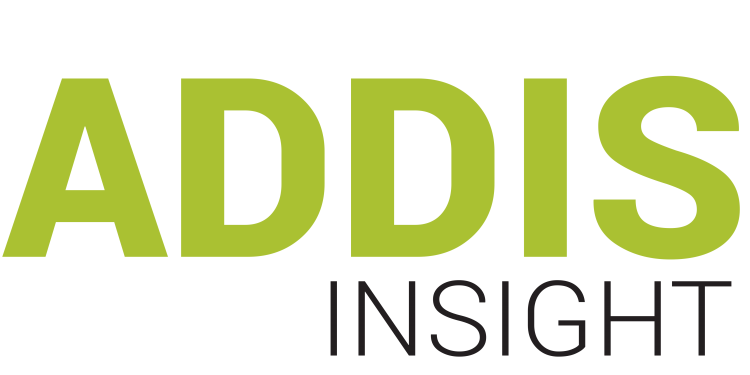Mahemud Tekuya (@MTekuya)
Disputes over the filling and operation of Ethiopia’s Grand Ethiopian Renaissance Dam have, once again, threatened security in North-East Africa.
Since November 2019, Ethiopia, Egypt, and Sudan have held dozens of negotiations ─ on the filling and operation of the GERD ─ which were supported and attended by the U.S. and the World Bank (WB) as observers.
The talks, which were progressing well at first, took a turn for the worst around the end of January, and have now reached a stalemate. Ethiopia recently rejected a deal brokered by the U.S. and announced that it would proceed with the filling of the dam in parallel with the construction as agreed in the DoP. In a growing diplomatic spat, Egypt vowed to protect its interest over the Nile “by all available means.”
As reported by Wazema Radio, how Ethiopia should fill and operate the GERD during drought, prolonged drought and prolonged dry years, and dispute resolution are the main sticking points.
Filling the GERD
Drought, according to the proposals tabled by the observers, is when the release from the GERD is below 37 BCM. During the drought period, Ethiopia is expected to release the “flow” of the Nile plus supplemental water from its storage, to be agreed by the parties, from the GERD.
Prolonged drought is when the release from the GERD is below 39 BCM for four years. During this time, Ethiopia is expected to release the flow of the Blue Nile and 62.5 percent of the available water above 603 MASL of the GERD in the following four years.
Prolonged dry years are when the release from the GERD is below 40 BCM for four consecutive years. During this period, Ethiopia is expected to release the flow and a total of 50 percent of the GERD storage above 603 MASL for the next four consecutive years.
The proposal has two common features: (1) Ethiopia is expected to release the “flow” to the downstream countries and (2) that it incurs certain quantities of water debt that must be paid from the reservoir of the GERD.
The first one forecloses Ethiopia’s right to use the Nile. As “flow” includes the tributaries of the Blue Nile, agreeing to release the “flow” will prohibit Ethiopia from equitably using the waters above the GERD.
The second feature, water debt and releasing more waters from the GERD, is also against Ethiopia’s interest. International experiences show that upstream countries are allowed to deliver below the minimum quantity of the water during severe drought seasons and repay the water during the normal seasons. However, water debt and repayment are relevant only when there is a water-sharing arrangement between riparian countries. There is no water-sharing arrangement in the Nile case, and no minimum amount of water allocated to Egypt and Sudan. Therefore, the concept of water debt is inappropriate
The implication of agreeing to release water from the GERD reservoirs is nothing short of recognizing the water share allocated in the 1959 bilateral treaty between Sudan and Egypt. The idea is because of the filling of the GERD, Ethiopia will release below the “established rights” of Egypt and Sudan, and it must, therefore, repay the debt from its reservoirs. If Ethiopia is required to release water from its own reservoirs, then it does not have any share from the Nile waters. The proposals on the long-term operation of the dam support this conclusion.
Long Term Operation
The definitions of drought, prolonged drought and prolonged dry years in the long-term operation are similar to the definitions provided in the filling period. The only difference is the amount of water to be released from the GERD.
During the drought period, Ethiopia is expected to release the flow and more water, the amount of which is to be agreed by the parties, from the GERD. During prolonged drought periods and dry years, Ethiopia is expected to release the flow and all available water above 603 MASL of the GERD within four years. For instance, if the GERD stores 74 BCM during prolonged drought and dry years, Ethiopia will retain 25 BCM and release all water above 603 AMSL, which means 49 BCM, in the following four consecutive years.
All the concerns raised above as to the filling of the GERD mutatis-mutandis apply here. However, agreeing on the long-term operation of the GERD has also another implication, i.e. water allocation.
Agreeing to release the flow during the long-term operation of the dam, for instance, has two devastating consequences. First, since flow includes the entire water of the river, Ethiopia, whose territory contributes all waters, will have no share, not even a single drop, from the Blue Nile. Put in other words, Ethiopia will be prohibited from using the tributaries of the Blue Nile for irrigation or hydroelectric power generation. The GERD will be the last project for Ethiopia. Second, it will give recognition to Egypt’s claim for established rights (55.5 BCM) and impose the 1959 treaty on Ethiopia.
Drought is a natural phenomenon that should be addressed collectively. Drought prevention should not be the sole responsibility of Ethiopia. The three countries should cooperate and support one another in addressing the problem of drought, but this should not be Ethiopia to lay the cost of drought for Egypt to enjoy and flourish.
Besides, the scope of the agreement envisaged in Principle V of DoP is restricted to the GERD, Ethiopia should, therefore, agree to release only the inflow of the GERD, i.e. the water that enters into the GERD and not the river flow.
Since the proposal did not address the scenario when the release from the GERD is above 40 BCM, one may expect that Ethiopia will have a water share during the normal operation of the dam where the average flow of the Blue Nile is 49 BCM. Egypt already requested Ethiopia to release the entire flow of the Blue Nile during the normal operations of the dam, although Ethiopia outright rejected the proposal.
But, even if we were to assume that the three countries will share the remaining 9 BCM of waters, it seems that Ethiopia will not get much water from the Blue Nile. Given the ever-increasing average global temperature due to climate change, the dam is projected to evaporate about 2 BCM a year. This is much less than 10 BCM to 15 BCM annual evaporation in Egypt’s High Aswan Dam, but it still affects the water share. That means the net-water the three countries expected to share will be less than 7 BCM. Considering this, one may wonder how much will Ethiopia get from the Blue Nile? 2 BCM?!
Furthermore, given climate change studies that predict water scarcity and severe droughts in the Nile Basin, it will be impossible for Ethiopia to release 40 BCM from the GERD, let alone get a share from the Blue Nile. Even worse, Ethiopia will be in perpetual water debt where it will be forced to release more waters from the GERD. This, in effect, will make the GERD an Egyptian storage facility.
Dispute Resolution
As noted, the proposal imposes unjust those colonial and bilateral treaties on Ethiopia. But Egypt was not satisfied with the mere endorsement of those accords and needed other means to safeguard them. To that end, it proposed the inclusion of a binding arbitration clause in the GERD Treaty. Ethiopia rejected this and demanded the three countries should resolve disputes by themselves and request meditation when necessary.
Ethiopia’s approach is appropriate for the following reasons. First, the DoP which provides the framework for the GERD talks does not require the establishment of binding dispute resolutions. The DoP contemplates disputes relating to the filling and operation of the GERD to be resolved through the consultation of ministries responsible for water. If the dispute cannot be resolved, the ministers will send the matter to the consideration of their respective heads of states which may resolve the dispute or refer it to meditation. Even the last option, referring disputes to mediation, is not mandatory.
Second, agreeing to binding dispute resolution is inappropriate from the perspective of Ethiopia’s sovereignty. Under international law, transboundary waters are shared resources. But states have a sovereign right to manage national projects independently. State practice shows that binding dispute resolutions are appropriate only for joint projects. The GERD is not a joint project, but a unilateral national project in Ethiopian territory. Therefore, it should not be subject binding dispute resolution.
Third, subjecting the GERD to binding dispute resolution is contrary to the principle of reciprocity. In the past, Egypt and Sudan have constructed several dams and reservoirs without consulting, and with objections from, Ethiopia. These dams and reservoirs have significantly harmed Ethiopia by foreclosing its right to use the Nile waters (Under international law, downstream countries too can cause significant harm to upstream countries). Yet, they are not subject to binding dispute resolutions. Therefore, the GERD shall not be subject to binding dispute resolutions.
In addition to these sticking points, Egypt has long been interested to oversee the management of the dam and has already proposed to open an office in the GERD site. Ethiopia has long been outright rejecting such proposals. But now, it is reported that the U.S. drafted agreement has entitled Egypt to have a say on the management of Ethiopia’s national project.
Mahemud is a former Dire Dawa University lecturer. He is a Ph.D./JSD candidate in international law and legal studies at the University of the Pacific, McGeorge School of Law. He does his dissertation on transboundary water resource issues under the supervision of Professor Stephen C. McCaffrey
He can be reached at mahmudeshetu@gmail.com




